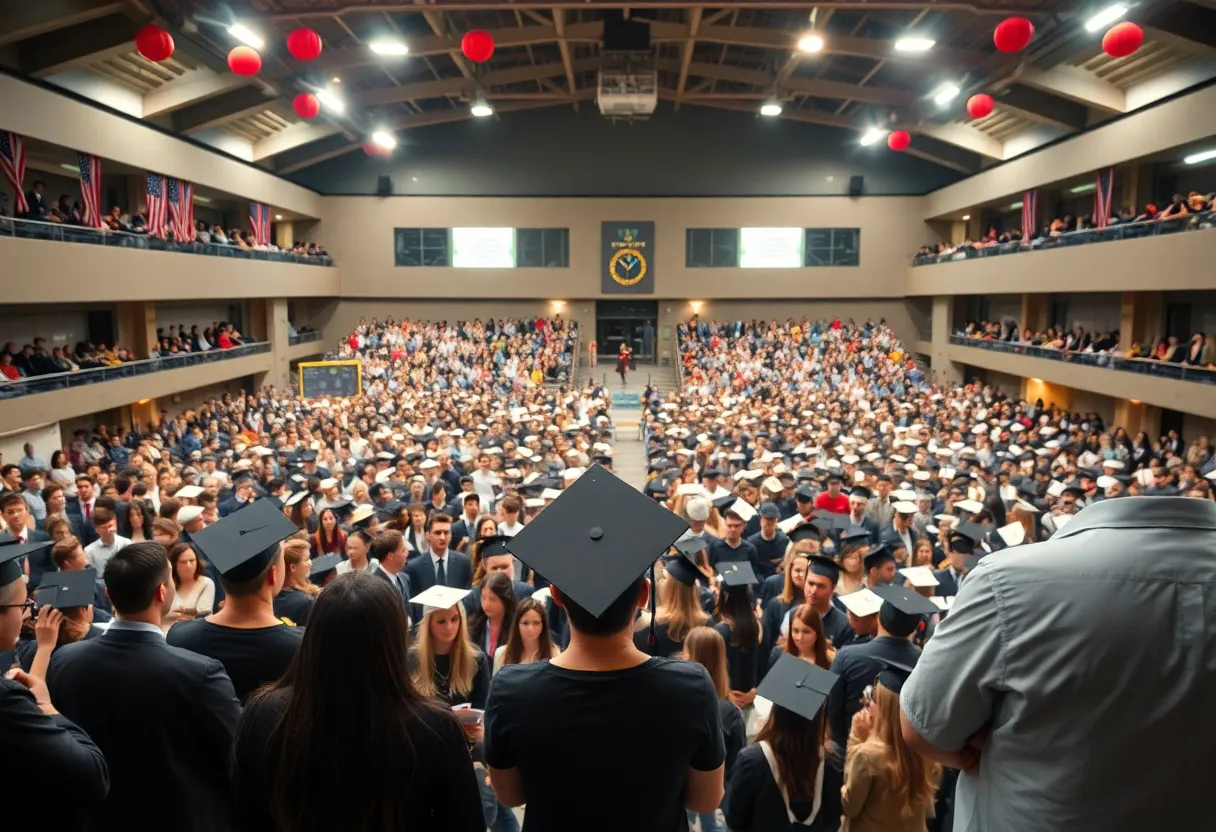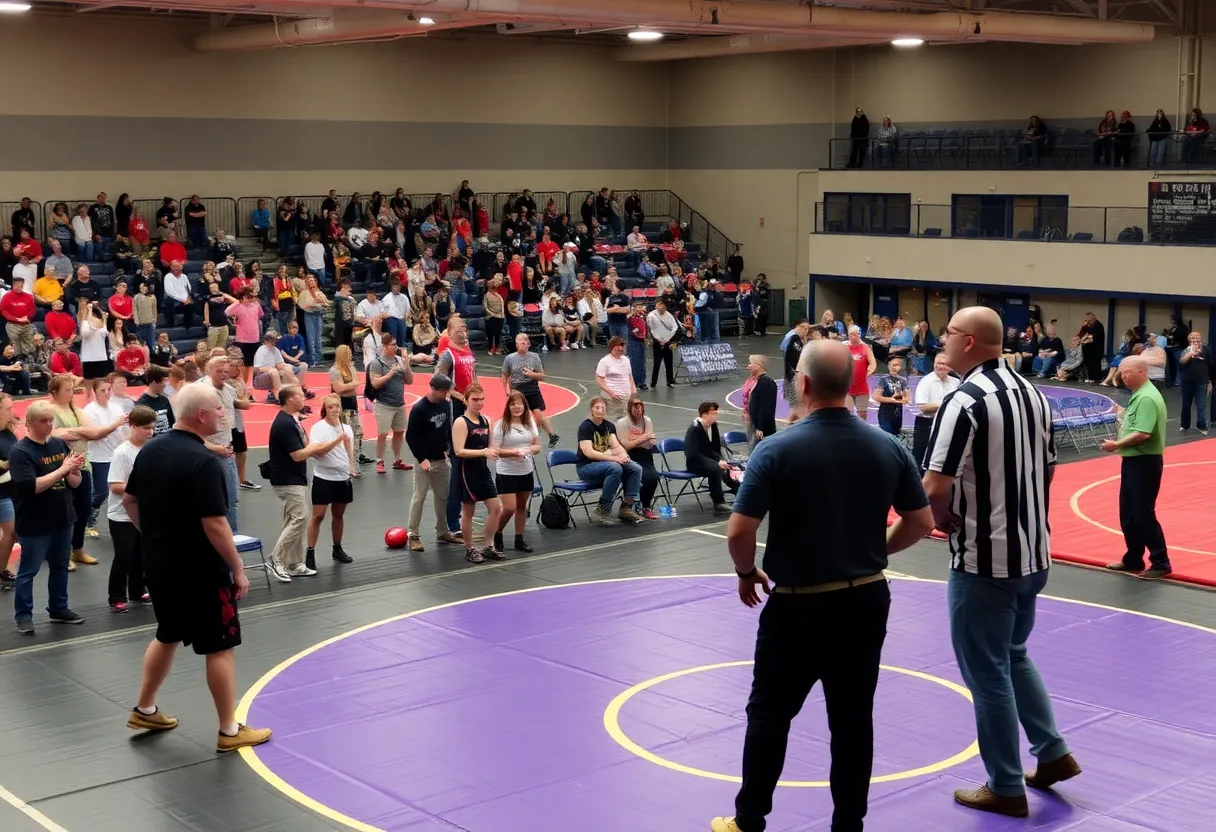Oklahoma City, October 17, 2025
Oklahoma City school districts are in urgent need of new venues for graduation ceremonies as the state fairgrounds announces renovations until mid-2026. This disruption impacts thousands of students, particularly in Moore and Putnam City districts, leading administrators to explore alternative locations amid rising costs and increased enrollment pressures. The cost of relocation could surpass $500,000, prompting calls for state funding assistance as schools adapt to maintain graduation traditions with innovative solutions and community support.
Oklahoma City Schools Face Major Challenges After State Fairgrounds Venue Disruption
Oklahoma City school districts are urgently seeking new locations for graduation ceremonies after the state fairgrounds, a long-time host for these events, announced renovations that will close it until mid-2026. This sudden change affects thousands of students across the metro area, including those in Moore and Putnam City districts, forcing administrators to rethink traditions amid tight budgets and growing enrollment.
The fairgrounds’ management revealed the renovation plans this week, pointing to necessary updates for safety and capacity. These improvements will halt all large-scale events, including high school graduations, for nearly two years. With ceremonies typically held in spring, districts now have less than a year to secure alternatives, creating a scramble in an already strained education system.
Alternative Venues and Emerging Hurdles
Administrators are turning to options like the Cox Convention Center and partnerships with local universities to accommodate the crowds. However, these sites come with limited availability, especially during peak event seasons, and higher rental fees that could strain public school funds. Officials estimate that the collective relocation costs for affected districts may surpass $500,000, covering venue bookings, transportation, and additional staffing.
Adding to the complexity, suburban areas like Yukon are experiencing rising enrollment pressures from population growth, which means larger graduating classes and greater demand for spacious venues. This has prompted school boards to explore creative solutions, such as splitting ceremonies into multiple sessions or using hybrid formats that combine in-person and virtual elements to reach more families.
Community Response and Calls for Support
Parents and education leaders are pushing for state funding assistance to offset the financial hit. They argue that public budgets should not bear the full burden of a facility upgrade unrelated to school operations. In meetings this week, advocacy groups highlighted the need for streamlined permitting processes at public arenas, which could speed up approvals and reduce administrative delays. Some districts, facing immediate constraints, are opting for smaller, on-campus events to preserve graduation traditions while keeping expenses down. These adjustments aim to maintain the celebratory atmosphere without overspending.
Lessons from Nearby Adaptations
Districts in nearby Enid have successfully navigated similar disruptions by adopting virtual streaming hybrids, where live events are broadcast online for remote viewers. This approach not only cuts costs but also broadens participation for families unable to attend in person. Oklahoma City officials are reviewing these models as potential blueprints, emphasizing the importance of technology in modern event planning.
Broader Implications for Education Infrastructure
This venue crisis underscores ongoing infrastructure strains in Oklahoma’s education system. With aging facilities and increasing student numbers, schools are repeatedly challenged to balance core academic needs with extracurricular events like graduations. Experts point to the need for long-term planning, including dedicated state resources for event spaces that can handle large gatherings. Without such measures, districts may face recurring disruptions that affect student morale and community engagement.
The situation has sparked discussions on how to build resilience into school operations. For instance, diversifying venue options early in the planning cycle could prevent future bottlenecks. As renovations at the fairgrounds proceed, education stakeholders are collaborating to ensure minimal impact on the Class of 2026 and beyond. Temporary solutions, like shared use of civic centers, are being negotiated to bridge the gap.
While the immediate focus remains on logistics, this event highlights the interconnectedness of public infrastructure and education. Schools in the Oklahoma City metro are adapting quickly, but the episode serves as a reminder of the need for proactive strategies to support growing communities.
FAQ
What caused the disruption to graduation venues in Oklahoma City?
The state fairgrounds announced renovations that will close it until mid-2026, affecting ceremonies for districts like Moore and Putnam City.
Which school districts are most impacted?
Districts such as Moore and Putnam City are scrambling to secure alternatives, with thousands of students affected across the metro area.
What alternative venues are being considered?
Options include the Cox Convention Center and local universities, though availability and costs pose challenges for public budgets.
How is enrollment growth contributing to the issue?
Rising enrollment pressures due to population growth in suburbs like Yukon mean larger graduating classes and greater demand for spacious venues.
What are the estimated costs of relocation?
Education officials estimate relocation expenses could exceed $500,000 collectively for affected districts.
What support are parents and school boards seeking?
They are advocating for state funding assistance and streamlined permitting at public arenas to minimize disruptions.
How are some districts responding in the short term?
In the interim, some districts are shifting to smaller, on-campus events to maintain traditions while cutting costs.
What models are being looked at for adaptation?
Successful adaptations in nearby Enid provide models, emphasizing virtual streaming hybrids to engage families.
What broader issues does this highlight?
This situation highlights broader infrastructure strains on Oklahoma’s education system, with experts urging long-term planning for event spaces.
Key Challenges and Responses Overview
The following table outlines the primary challenges faced by Oklahoma City school districts and their planned responses to the graduation venue disruption.
| Challenge | Details | Response |
|---|---|---|
| Venue Unavailability | State fairgrounds closed until mid-2026 for renovations | Exploring Cox Convention Center and local universities |
| Cost Implications | Relocation expenses exceeding $500,000 collectively | Calls for state funding assistance and on-campus events |
| Enrollment Pressures | Population growth in areas like Yukon increasing class sizes | Hybrid virtual streaming to accommodate larger groups |
| Infrastructure Strains | Broader issues in Oklahoma’s education system | Long-term planning for event spaces, learning from Enid models |
Deeper Dive: News & Info About This Topic
HERE Resources
Oklahoma City Education Leaders Launch Town Hall Series





